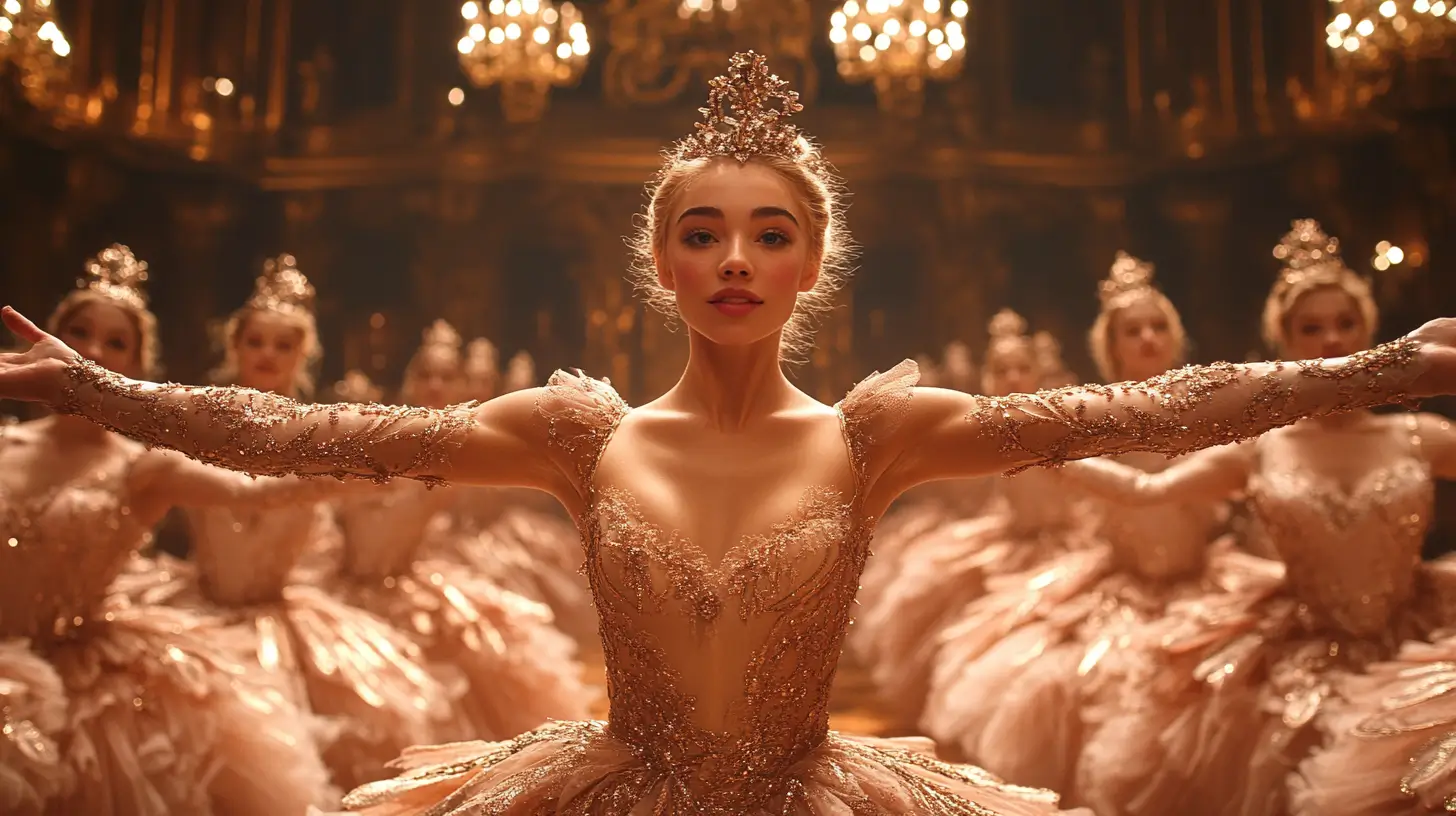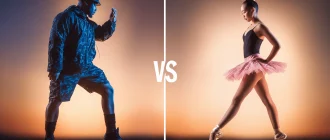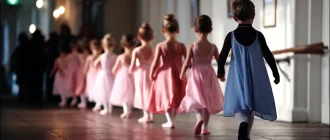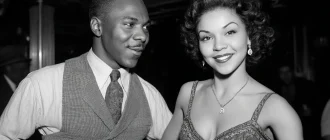Why is ballet still popular? This article delves into research on the popularity of ballets, exploring their historical roots and modern appeal. We will examine how ballet evolved from Renaissance courts to today’s global stage, highlighting key influences and trends. Expect insights into cultural and societal factors that keep ballet relevant and beloved.
Graceful Insights
- Ballet’s transformation from a court entertainment, ballet de cour, to a structured art began in the 15th century, and it was significantly influenced by figures like Catherine de’ Medici and King Louis XIV.
- Russian ballet rose to prominence in the late 19th and early 20th centuries, with iconic works and the Ballet Russes expanding its global appeal through innovative choreography and collaboration.
- Contemporary ballet continues to evolve by embracing diversity and innovative approaches, notably through gender-neutral choreography and cross-genre collaborations that enhance its relevance and accessibility.
Art de Podcast
The Historical Roots of Ballet Popularity
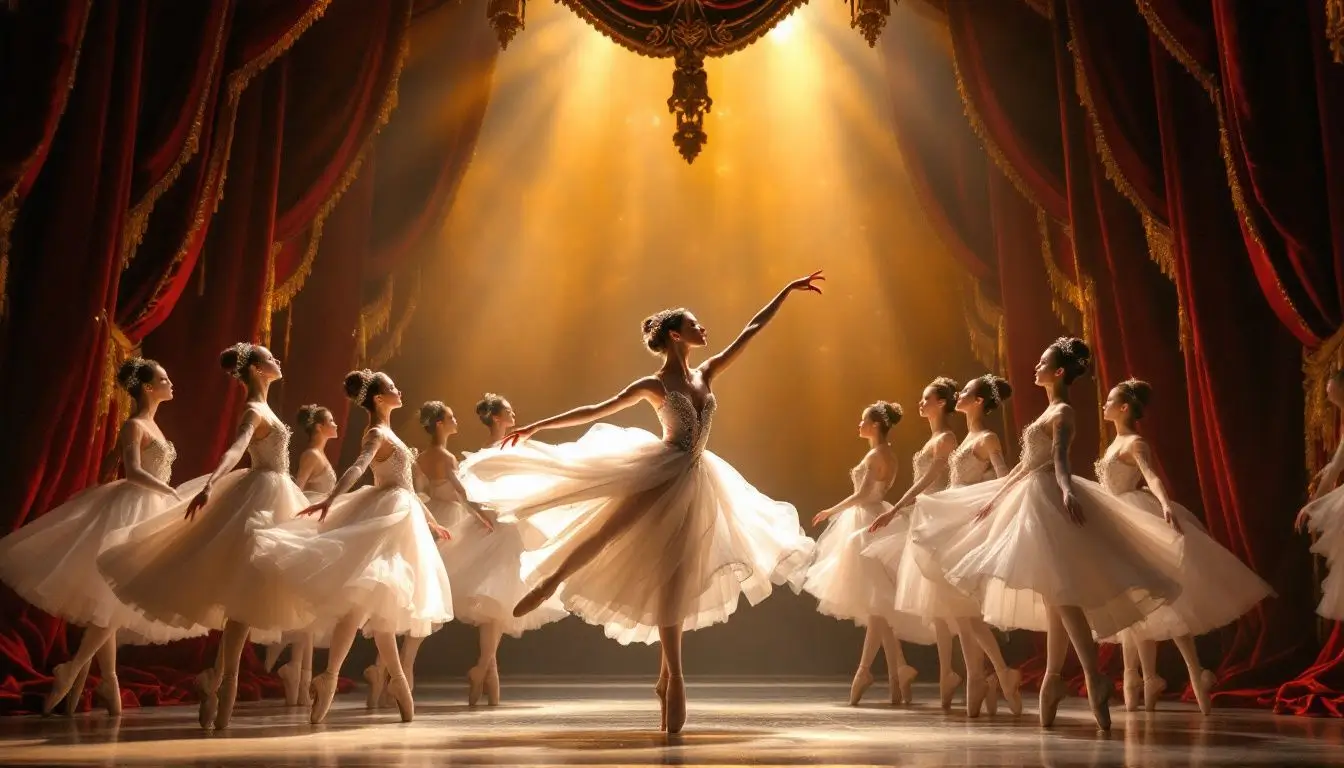
Ballet began in the opulent courts of the Italian Renaissance in the 15th century, serving as a form of entertainment among noble amateurs. This pastime combined dance, music, and elaborate costumes to delight the aristocracy. Catherine de’ Medici played a pivotal role in ballet’s evolution by introducing these Italian traditions to France. Her influence fostered ballet’s growth within the French court, and under King Louis XIV, ballet underwent a significant transformation.
King Louis XIV, known as the Sun King, was an avid dancer and a passionate patron of the arts. During his reign, ballet evolved from amateur performances to a structured and professional art form. In 1661, he established the Académie Royale de Danse, the first professional ballet school, which standardized ballet training and set the stage for future developments.
Notable ballet masters, such as Jean-Georges Noverre, played a crucial role in shaping the techniques and standards of ballet during this period. This institution began a more sophisticated approach to ballet, incorporating elaborate sets and music tailored for ballet productions.
Ballet evolved into a sophisticated performance art by integrating complex choreography, music, and elaborate sets. The introduction of ballet d’action by Jean-Georges Noverre emphasized dramatic narratives and storytelling, marking a significant shift in ballet’s evolution. This transformation elevated it from court entertainment to a respected art form, laying the groundwork for the various styles and techniques that define ballet today.
The Romantic Era and Its Impact
The 19th-century Romantic Movement greatly influenced ballet by highlighting emotion, fantasy, and the supernatural. Romantic ballets typically navigated the fragile line between reality and dreams, showcasing spirits, ethereal figures, and the conflict between love and loss.
Seminal works such as Giselle and La Sylphide epitomized the Romantic ballet’s themes. Giselle, first performed in 1841, was heavily inspired by the earlier La Sylphide, and both ballets became iconic representations of the era. These works captivated audiences with their poignant narratives and ethereal choreography, solidifying their place in ballet history.
The popularization of pointe work was a significant development during this period. Pioneering ballerina Marie Taglioni was instrumental in this advancement, creating the illusion of floating and adding an otherworldly quality to the dance. This technique became a hallmark of Romantic ballet, enhancing its visual aesthetic and emotional impact, particularly in dancing en pointe.
Russian Influence and Global Expansion
Russian ballet rose to prominence in the late 19th and early 20th centuries, profoundly shaping the art form and expanding its global reach. Marius Petipa, a pivotal figure in Russian ballet, created over fifty ballets that significantly influenced ballet’s development. Iconic works such as Swan Lake and The Sleeping Beauty, choreographed with Tchaikovsky, became cornerstones of the ballet repertoire.
Petipa’s meticulous choreography and grand productions set a new standard for ballet. His partnership with composer Ludwig Minkus resulted in many beloved ballets, including Don Quixote and La Bayadère. These works showcased the opulence and technical prowess that came to define Russian ballet, and they remain staples of the Imperial Ballet’s repertoire.
Serge Diaghilev’s Ballet Russes further expanded Russian ballet by introducing it to Western audiences. The company toured Europe, captivating audiences with innovative choreography, stunning set designs, and a fusion of various art forms. It played a crucial role in broadening the audience for Russian ballet and enhancing its global appeal.
The influence of the Ballet Russes made ballet a truly international art form. Their tours and collaborations with artists from different disciplines revolutionized ballet, making it more accessible and appealing to diverse cultures. This global expansion solidified ballet’s place in the performing arts world, setting the stage for future innovations.
20th Century Innovations
The 20th century brought significant innovations to ballet, with choreographers like George Balanchine leading the charge. Recognized as a leading modern choreographer, Balanchine revolutionized ballet by blending classical techniques with contemporary styles. His work with the New York City Ballet modernized ballet’s approach and brought a fresh perspective to the American ballet scene.
Balanchine’s choreography often emphasized movement over narrative, allowing the dance to take center stage. This focus on pure movement created a new aesthetic, highlighting the dancers’ technical abilities and the beauty of their movements. During this period, collaboration between composers and ballet companies led to iconic performances, blending classical forms with contemporary innovations.
The 20th century saw a fusion of classical ballet and contemporary techniques in ballet, creating a dynamic and ever-evolving art form. These innovations set the stage for modern ballet, pushing boundaries and exploring new artistic possibilities.
Contemporary Ballet Trends
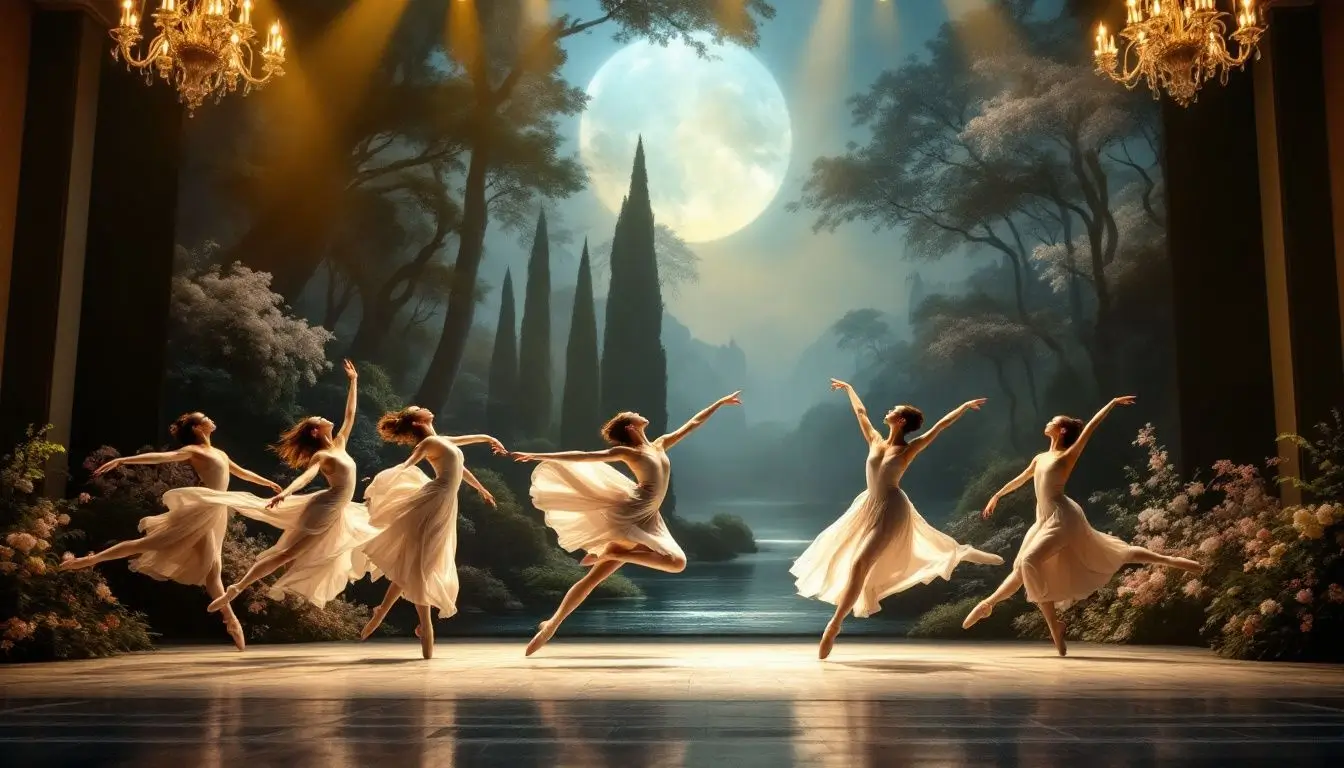
Contemporary ballet has emerged as a vibrant and evolving art form. It blends ballet and modern dance elements to create a more expressive and varied movement vocabulary. This fusion allows for greater creativity and innovation in choreography, resulting in captivating and emotionally resonant performances.
Cross-genre collaborations have become increasingly popular, with ballet companies merging ballet with contemporary dance, hip-hop, and other styles. This trend has diversified ballet’s movement vocabulary and allowed male dancers to break traditional stereotypes, taking on diverse characters and styles. The evolving roles of male dancers reflect a broader shift towards inclusivity and representation in ballet.
Female dancers in contemporary ballet now often showcase strength and athleticism alongside grace, challenging traditional notions of femininity. This shift allows ballet dancers to portray various roles and characters. Ballet companies are increasingly focusing on diverse representation in the dancers they employ and the stories they tell on stage.
These contemporary trends highlight ballet’s dynamic nature and ability to adapt and evolve. As ballet embraces new influences and pushes boundaries, it remains a relevant and powerful art form resonating with audiences worldwide.
The Role of Ballet Companies
Major ballet companies have played a crucial role in the global dissemination of ballet, establishing productions that resonate with diverse cultures. Ballet masters like Pierre Beauchamp and Louis Pécour were instrumental in ensuring the prestige and quality of French ballet, particularly within the context of French opera. The Ballet Russes, for instance, significantly transformed ballet by integrating various art forms and revolutionizing set designs and choreography. Their innovative approach had a lasting impact and set new standards for ballet productions.
The American Ballet Theatre has introduced ballet to wider audiences and showcased diverse choreography. The theatre has broadened ballet’s appeal by performing classical and contemporary works and attracting new audiences. Its commitment to excellence and innovation has made it a leading force in the ballet community.
Alvin Ailey American Dance Theater has broadened the audience and appreciation for ballet by infusing it with elements of African American culture. Their unique approach has enriched the art form and highlighted the importance of cultural diversity in ballet. These ballet companies play a vital role in shaping the future of ballet and ensuring its relevance in the modern dance world.
Ballet in Popular Culture
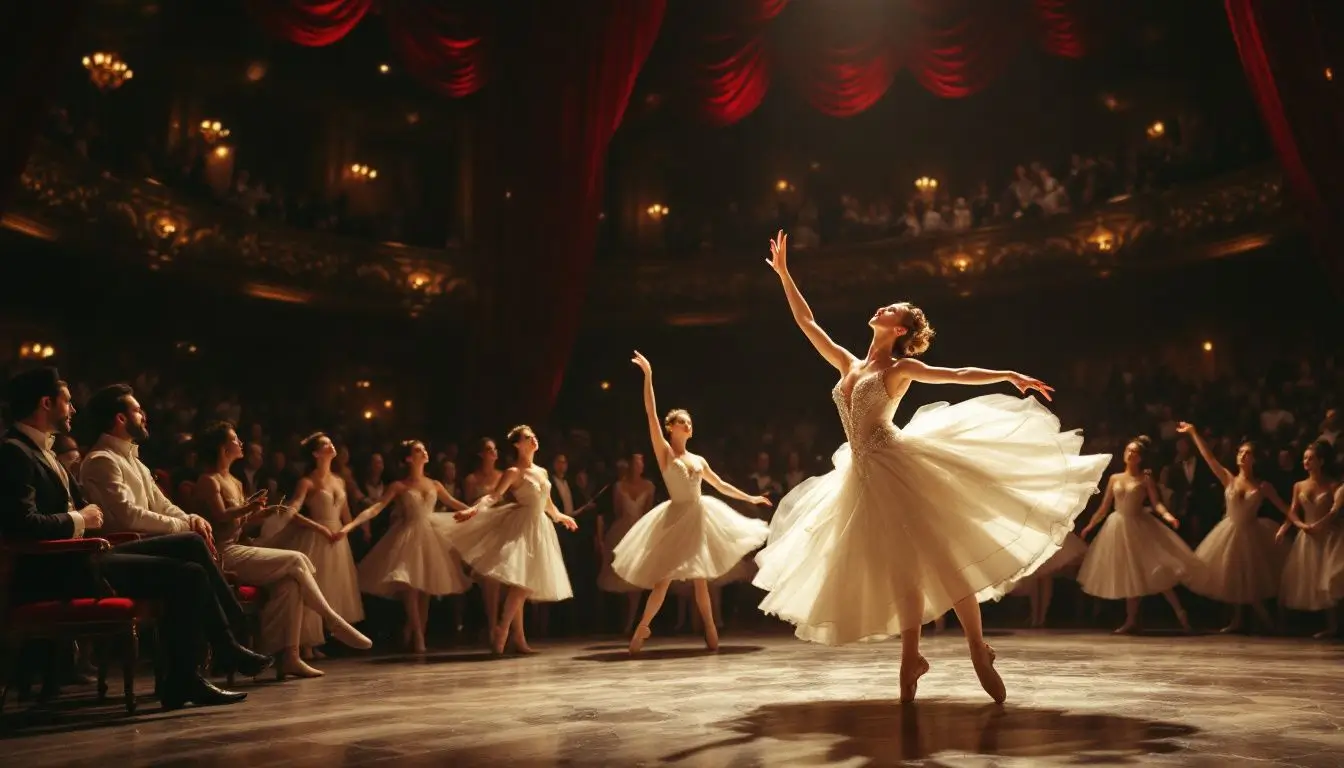
Ballet’s influence extends beyond the stage and into popular culture. The Romantic period, for example, saw the introduction of iconic white-tulle skirts, which became a hallmark of the ballet aesthetic. These costumes have significantly influenced fashion trends, with ballet-specific attire like leotards and ballet flats becoming popular outside dance settings.
The ‘ballet core’ fashion trend emphasizes delicate, feminine clothing, like tulle skirts and ballet flats, merging elegance with everyday wear. Drawing inspiration from traditional ballet aesthetics, this trend promotes comfort and femininity. Contemporary fashion trends like the ‘ballet core’ highlight ballet’s enduring influence on modern fashion.
The Ballets Russes, particularly in the early 20th century, played a crucial role in merging ballet with fashion, impacting designers in Paris. Renowned fashion designers like Christian Dior and Coco Chanel were inspired by ballet’s elegance and incorporated its elements into their clothing lines.
Films like ‘Black Swan’ have contributed to popularizing ballet-themed fashion, highlighting ballet’s cultural relevance. Ballet’s representation in popular culture underscores its timeless appeal and influence. From fashion to film, ballet inspires and captivates, proving that this classic dance form remains relevant and impactful today.
Ballet Classes and Education
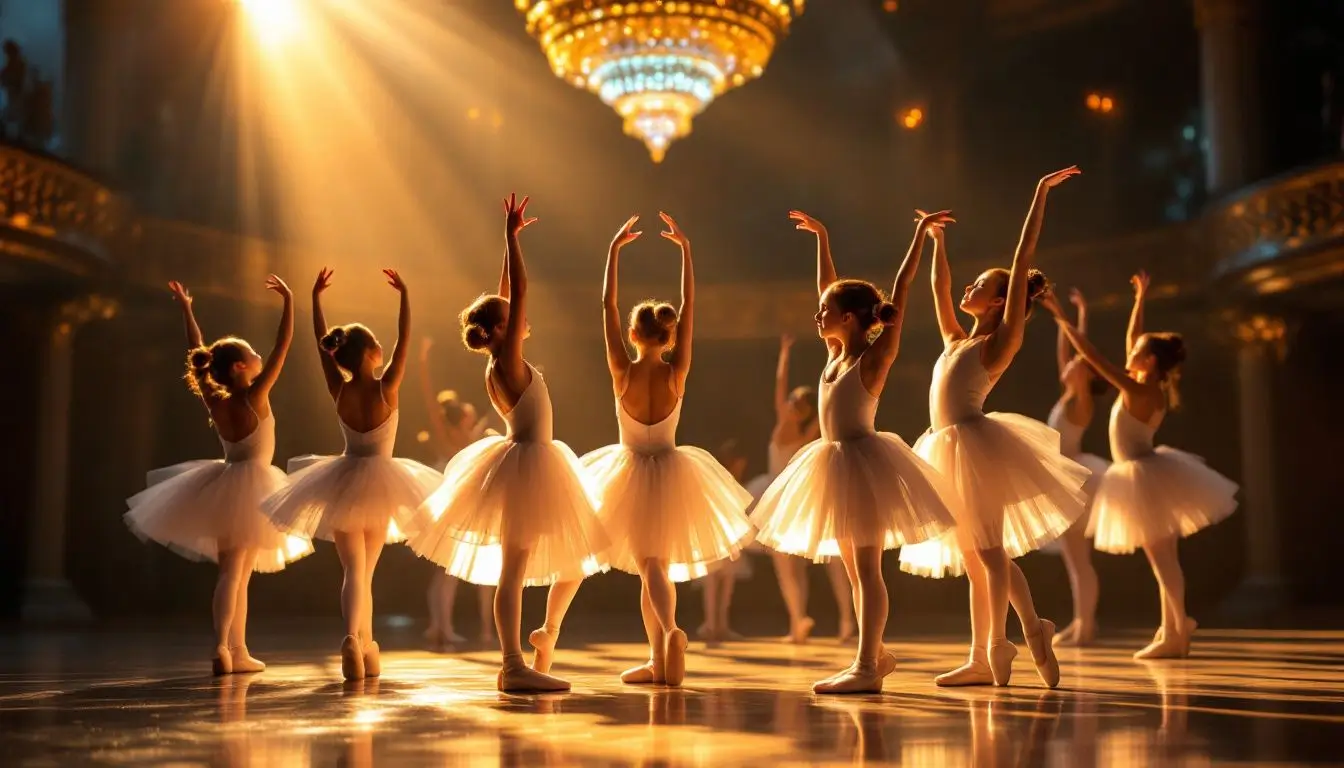
Ballet education and training are essential for developing skilled dancers and preserving the art. Ballet training improves strength, flexibility, and balance, vital for high-level dancing. The structured nature of ballet classes also fosters discipline and focus, which are important traits for dancers and beneficial in various life pursuits.
George Balanchine’s establishment of the School of American Ballet in 1934 was pivotal for nurturing American ballet talent. This institution has produced countless professional dancers who have gone on to perform with major ballet companies worldwide. Similarly, the Imperial Ballet School was crucial in shaping the techniques and training standards widely adopted in ballet today.
Adult beginner ballet classes have become increasingly popular. These classes welcome people of all skill levels and offer adults the opportunity to experience the joys of ballet, regardless of their prior dance experience. Ballet education plays a vital role in the dance community, ensuring the art form’s longevity and accessibility.
The Future of Ballet
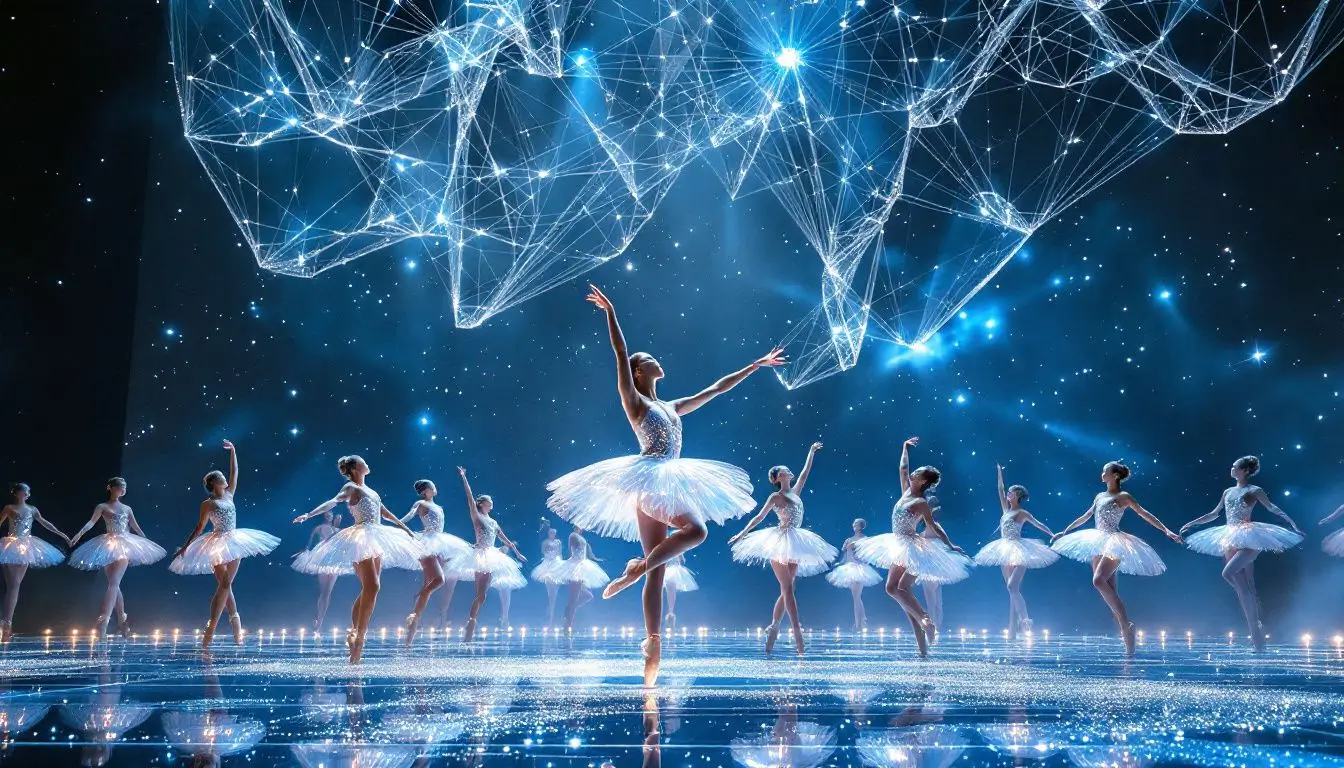
The future of ballet looks promising, with contemporary choreographers embracing innovative approaches and challenging traditional norms. One significant trend is the rise of gender-neutral choreography and mixed-gender partnering. These new approaches expand the movement vocabulary and create more inclusive and diverse performances.
Contemporary choreographers frequently address and subvert traditional gender roles through innovative movement and storytelling. By exploring new themes and pushing the boundaries of conventional ballet narratives, they make ballet more relevant to modern audiences. This creativity and willingness to experiment are essential for ballet’s continued evolution.
As ballet embraces diverse styles and a wide range of experiences, it remains a dynamic and ever-evolving art form. Its future lies in its ability to adapt and innovate while remaining true to its rich history and traditions. With the support of ballet companies, choreographers, and audiences, ballet will continue to captivate and inspire future generations.
| Research Aspect | Description | Methodology | Key Findings | Implications |
|---|---|---|---|---|
| Audience Demographics | Analysis of ballet audiences by age, income, and cultural background | Surveys, interviews, and audience data analytics | Emerging trends shift toward younger, more diverse, and urban audiences. | Enables targeted marketing strategies and programming diversification to attract new demographics |
| Cultural Impact | Examination of ballet’s role within modern cultural narratives | Ethnographic studies, media analysis, and qualitative interviews | Ballet remains a prestigious art form that is evolving to reflect contemporary social themes | Encourages blending classical techniques with modern storytelling to maintain relevance |
| Economic Sustainability | Analysis of revenue models, funding sources, and overall financial health | Financial analysis, case studies, and economic impact reports | Funding and sponsorship models are fluctuating, increasing reliance on private investment alongside traditional public funding | Highlights the need for innovative and diversified funding strategies to ensure long-term viability |
| Digital Engagement | Investigation of how digital platforms and virtual performances influence ballet popularity | Social media analytics, digital surveys, and platform viewership data | Online streaming and social media presence have significantly expanded global reach | Suggests integrating digital platforms with live performances to engage broader audiences |
| Historical Trends | Study of the evolution of ballet popularity over the past decades | Archival research, literature reviews, and historical data analysis | Cyclical patterns in popularity with distinct periods of renaissance and decline | Offers insights for forecasting future trends and adapting programming based on historical precedents |
Resume
Ballet has undergone a remarkable journey from its origins in the Italian Renaissance courts to its current status as a global art form. Its historical roots, the impact of the Romantic era, the influence of Russian ballet, and the innovations of the 20th century have all contributed to its evolution. Contemporary trends and the role of major ballet companies continue to shape ballet’s future, ensuring its relevance and appeal.
As we look to the future, ballet’s ability to adapt and embrace new influences will be key to its success. By celebrating its rich history and exploring new artistic possibilities, ballet will remain a powerful and inspiring art form for generations. Its timeless allure endures, captivating audiences and leaving an indelible mark on the dance world.
Frequently Asked Questions
Why is ballet still popular today?
Ballet remains popular today because it is a powerful storytelling medium, allowing dancers to express the human experience through its inherent discipline and beauty. This universal appeal transcends race and promotes self-expression in a structured yet artistic manner.
How did ballet gain popularity?
Ballet gained popularity in America during the 1930s, primarily due to dancers from Diaghilev’s company, notably George Balanchine, who established the New York City Ballet. This development significantly contributed to ballet’s prominence in the U.S. arts scene.
What are the origins of ballet?
Ballet originated in the 15th-century Italian Renaissance courts as noble entertainment. This art form evolved and spread to France and Russia, further developing into the structured dance style we recognize today.
How did the Romantic era influence ballet?
The Romantic era significantly influenced ballet by introducing love, loss, and supernatural themes, exemplified in iconic works such as Giselle and La Sylphide. This shift marked a profound transformation in ballet’s narrative and emotional depth.
What role did Russian ballet play in globalizing the art form?
Russian ballet played a crucial role in globalizing the art form. Influential figures such as Marius Petipa and Serge Diaghilev introduced innovative techniques and theatrical elements, enhancing its international reach and allure.
Is ballet still popular today?
Yes. Major companies from Paris to New York continue to sell out peak‑season performances, and touring troupes now draw a growing share of global ticket sales from rapidly expanding Asian markets, demonstrating sustained and geographically widening demand for live ballet.
How popular is ballet worldwide in 2024?
Industry analysts estimate the ballet performance market at roughly $4 billion in annual revenue, with forecasts pointing to steady single‑digit growth through the decade’s end as international festivals, cinema relays, and streaming deals broaden audiences beyond traditional theatre‑goers.
Why is ballet so popular with modern audiences?
Ballet offers a unique blend of athletic virtuosity, live classical music, and narrative spectacle; recent programming that pairs canon works with contemporary premieres, plus fashion and multimedia collaborations, keeps the form culturally relevant and visually fresh.
When was ballet most popular historically?
Ballet experienced peak cultural prestige during the Romantic era of the 1830s‑1850s, surged again in late‑Imperial Russia at the turn of the 20th century, and enjoyed another renaissance in mid‑20th‑century America under choreographers such as George Balanchine.
Which dance gained popularity in the Romantic period?
The waltz became the emblematic social dance of the Romantic era, captivating European ballrooms with its revolving embrace and influencing theatrical choreography.
Where is ballet popular today?
Live ballet maintains strongholds in the United States, Russia, France, and the United Kingdom. At the same time, China, Japan, South Korea, and Australia are the fastest‑growing markets, accounting for a rising share of global ticket revenue and online viewership.
How did ballet become popular in the first place?
Ballet originated in 15th‑century Italian court celebrations, was formalized in 17th‑century France under Louis XIV’s XIV’sXIV’sémie Royale de Danse, and spread across Europe through touring troupes and royal patronage, establishing it as a prestigious art form.
When did ballet become popular in the United States?
American ballet took off in the 1930s‑1940s after George Balanchine founded the School of American Ballet in 1934 and, later, New York City Ballet in 1948, seeding a nationwide professional network of companies and schools.
What role does digital streaming play in ballet’s popularity?
Since 2020, more than 70 percent of adults who watch performing arts online have attended archived or livestreamed ballet, expanding access for younger and more diverse audiences who cannot reach traditional venues.
How large is the economic footprint of ballet?
Beyond box‑office sales, ballet contributes to a dance industry that supports about 2.9 million jobs worldwide, from instructors and costume artisans to stage technicians and digital distributors.
Why is The Nutcracker crucial to ballet companies?
Holiday productions of TcTchaikovsky’she Nutcracker can generate up to 45 percent of an American cocompany’snnual ticket revenue, effectively subsidizing riskier new works programmed throughout the rest of the season.
What demographic shifts are shaping ballet audiences?
Recent studies show that 40 percent of ticket buyers in top Chinese venues and nearly one‑third of U.S. digital viewers are under 40, indicating a generational turnover fueled by social‑media exposure and diversified repertory choices.
Is ballet research expanding?
Yes. Organizations now track leadership diversity, pay equity, and repertoire trends across more than 170 companies worldwide, providing data that informs funding and policy decisions.
How did ballet evolve after the 15th century?
From court spectacles, ballet moved onto public stages, adopted codified technique, embraced storytelling in the 18th century, pioneered pointe work in the 19th, and integrated modern, neoclassical, and contemporary vocabularies in the 20th and 21st centuries.
Is ballet still popular during holiday seasons despite recent challenges?
Absolutely. Ticket demand for seasonal ballets has returned to—and in some cases surpassed—pre‑pandemic levels, with companies reporting record revenue after adopting dynamic pricing and digital ticketing tools.
Why is ballet research important for the future of the art form?
Data‑driven insights on audience behavior, leadership diversity, and economic impact help companies make strategic decisions, secure funding, and craft programming that keeps ballet artistically vibrant and financially sustainable.

